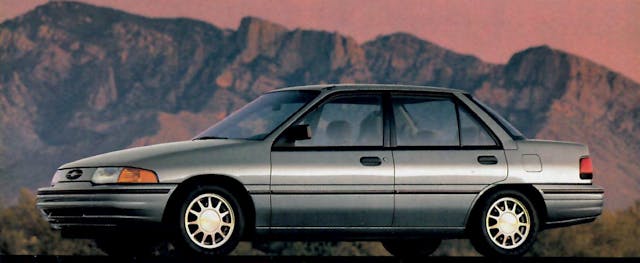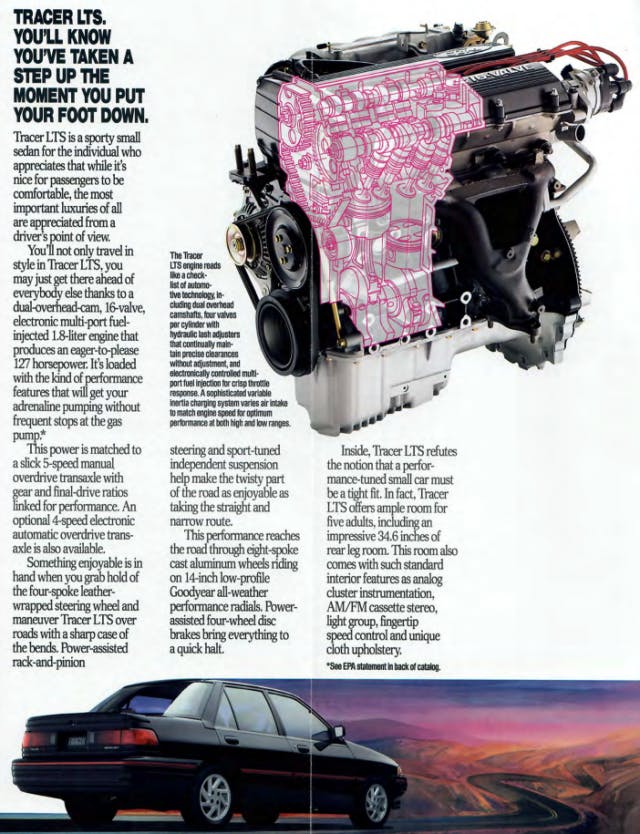The 1991–96 Mercury Tracer LTS coulda been a Civic fighter

FoMoCo’s near-luxury brand was initially (1939) intended to be better than a Ford but not quite a Lincoln. But that was also Edsel’s thing in the 1950s, as the Oldsmobile sucking on a lemon brand was also planning a ritzy, long-wheelbase version of the upcoming compact Ford Falcon. Which left Mercury flailing in the wind, until it wasn’t; Edsel’s demise meant a hasty rethink of the 1960 Comet into a standalone brand sold at Lincoln-Mercury dealerships. Such a bizarre twist of fate for a modestly priced vehicle is where our story begins, and Mercury’s constant need for affordable iron kept these interesting partnerships afloat for decades to come.
The Mercury Tracer was not to be outdone by the not-an-Edsel Comet, because it came from Mazda architectures/powertrains, as Ford owned a majority stake in the Japanese automaker. Which made the original (1988) Tracer unique (no American Ford counterpart) and transformed the 1991 redesign into a seriously underrated bit of kit. If you chose the LTS performance sedan, as Car and Driver did for its 10 Best awards that year.
Motorweek‘s Retro Road Test of the twin-cammed, five-speed manual gearboxed, and red-pinstriped 1991 Mercury shows performance on par with that of the redesigned 1992 Civic EX sedan. No, really: watch both episodes. The Mercury is marginally quicker, likely had more feedback in the slalom, and might be quieter on the highway. The Civic EX boasted ABS brakes and airbags and had better fuel economy, but cost significantly more—too bad Motorweek didn’t give the price of the Civic it tested, which had such decadent luxuries as a stereo and air conditioning.
Not that value was on the minds of Civic buyers at the time, as buying a premium-priced Honda ensured you enabled their American kickback scheme got a quality car with cutting edge VTEC powerbands and squidgy interior polymers worthy of a contemporary Cadillac. Even with those headwinds, the Tracer LTS coulda been a contender, had there not been a carbon-copy Ford Escort LX-E performance sedan.

Unlike the original Tracer, which was outstanding (well, in terms of uniqueness), this generation was merely an Escort that lost its decidedly Taurean grille for a Sable-ish front light bar … that didn’t illuminate.
Be it the Escort GT three-door or LX-E performance sedan, either would likely be cross-shopped over the LTS-spec Mercury. And perhaps those with a penchant for imports (either on principal alone, or for sportier dynamics) prefer the Mazda’s Protegé source code over any FoMoCo byproduct. The more premium Mercury never had a chance with Honda buyers—unless you knew of Lincoln-Mercury’s often strong incentives on slow sellers, or if Dad preferred to buy your performance sedan from the same guy who sells him Cartier-grade Town Cars. It coulda been a Civic fighter, but dreams rarely come true for dying brands.


